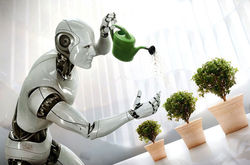Back to 1967, McLuhan said:
“Today’s child is bewildered when he enters the 19th century
environment that still characterizes the educational establishment
where information is scarce but ordered and structured by fragmented,
classified patterns subjects and schedules.”
And it’s still the case nowadays. We still learn and evolve in a 19th century environment.
It’s time we rethink why and how we learn.
DIGITAL LEARNING:
THE FUTURE OF LEARNING
In the conclusion of his book "Next Learning, unwrapped", Nick Van Dam listed 8 key ideas for Future Learning which he learnt from business cases he worked on throughout his career:
-
E-learning has to be a top-down strategy issue
-
Only produce content that has added value
-
Produce content with a versatile usage
-
Sustainability of content depends on pedagogy, as well as on technology
-
Content production and its implementation are strongly linked and cannot be seen separately
-
Learning is a social process and NOT self study - Professors are key
-
Professionalization of services (support/production/deployment) is very important
-
Professors as content experts have to be involved from beginning and have a key role as "change actors"
What new excited technologies wait for us just around the corner ?
Some of what we thought could only be science fiction exists today :
Leap technology: the new way of interacting with our computers
Oculus rift - Sony Morpheus: the virtual reality headset
Robotic technology
3D printing
Hologram technology

What do you think the future of education will be like? That seems like a child’s question immediately after its proposition but let’s seriously think about it for a second.
HOW THE FUTURE OF LEARNING WILL LOOK LIKE?

 LEAP TECHNOLOGY |
|---|
 OCULUS RIFT |
 ROBOTS IN 2029 |
 3D PRINTING |
 2 PAC HOLOGRAM COACHELLA 2012 |


